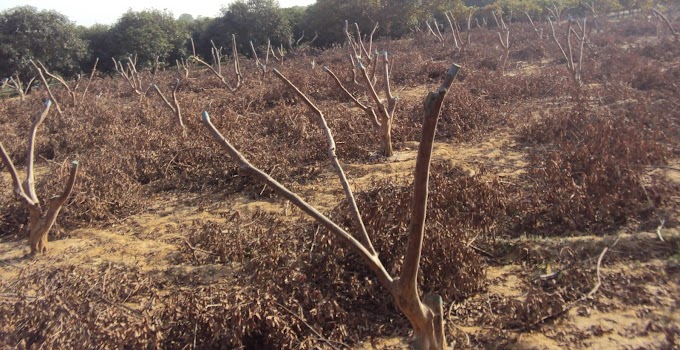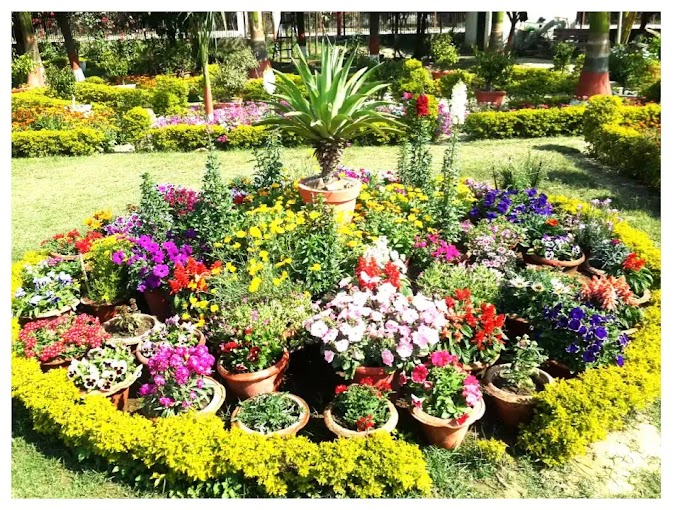The Horticulture is playing key role in the humans’ life since their existence on the earth. The plants were used for food and shelter during the primitive era of food gathering. On account of development in civilization, primitive nomadic humans shifted from food gathering habit to food cultivation habit and started the selection and domestication of
plants for foods, medicines and shelter. Later on, they developed the practice of post harvest storage and processing in the forms of drying and fermenting the fruits and vegetables. The Egyptian, Greeks and Romans laid down the foundation of modern horticulture by implementing new practices in the growing of horticultural plants. In addition to food, medicine, wood, fuel and nutrients modern horticulture is also practiced for beautification purposes and better environments. The role plays by horticulture in the modern life of the humans may be described in following heads:
i- Source of food and nutrients: The fruit and vegetable are rich source of carbohydrates, vitamins, minerals and antioxidants. Some fruits and vegetables are also good source of fats and proteins. The potatoes are used as staple foods in few parts of the World. The delicious processed products of fruits and vegetable such as pickles, sauces, jams, jellies, beverages, preserves have become the integral post of human diet. In India total grain production was 245 million tonnes and total fruits and vegetables production was 221 million tones in 2010-11. Thus total fruits and vegetables production was 87 per cent of total grain production of the country in 2010-11. The fruits and vegetables contribute about 18 percent to Indian diet. In the country per capita availability of fruits has increased from 138g/day in 2005 to 172g/day in 2010. Similarly the vegetables availability has also increased from 279g/ day to 318g/day during same span of time.
ii- Source of employments: The horticulture sector provides both direct and indirect employment opportunities. The horticulture is also special field of employment because it can accommodate highly qualified professionals, skilled and unskilled persons. Direct jobs are available in production, marketing and processing fields of horticultural produce while indirect jobs are available in research, extension, teaching, consultancy, marketing, management, transport, manufacturing of packaging materials and horticultural machinery and equipments.
iii- Source of Foreign exchange: Horticulture commodities are source of foreign exchange for many countries of the world. During 2010-11 India exported horticulture products worth Rs. 7818 crores which comprises fruits worth Rs. 2635 crores, vegetable worth Rs. 1221 crores, flowers ornamental plants and seeds worth Rs. 462 crores and processed fruits and vegetables products worth Rs. 3500 crores (APEDA), however India’s share in the global market of fruits and vegetables is around one per cent only.
iv-Contribution to GDP: In India horticulture contributes >25 percent to agricultural GDP only from 8.5 percent area. It shows more importance of horticultural corps in comparison to other agricultural crops of the country regarding contribution to agricultural GDP.
v- Contribution to environment health and mental piece: The plants of horticultural importance play vital role in environment protection and pollution control they purify air, cheek soil erosion thereby helpful in flood control. The orchards, gardens and parks are used by humans for their health improvement, healing, exercise and mental piece.
vi-Source of fuel, fodder and shelter: The dried parts of annual and perennial horticulture plants are used for burning while green parts are used as fodder of animals. The perennial trees of fruits and avenue plants provide shelter to passengers, birds and animals.
vii- Source of raw materials for industries: The horticulture provides raw materials to fruits and vegetable processing industries, wine industries, cold storage industries, pharmaceuticals and transport industries.
viii- Source of herbal medicines: The horticulture includes the cultivation and handling of herbaceous and woody plant of medicinal importance. These horticultural crops are source of raw materials for many herbal preparations used as medicine.







